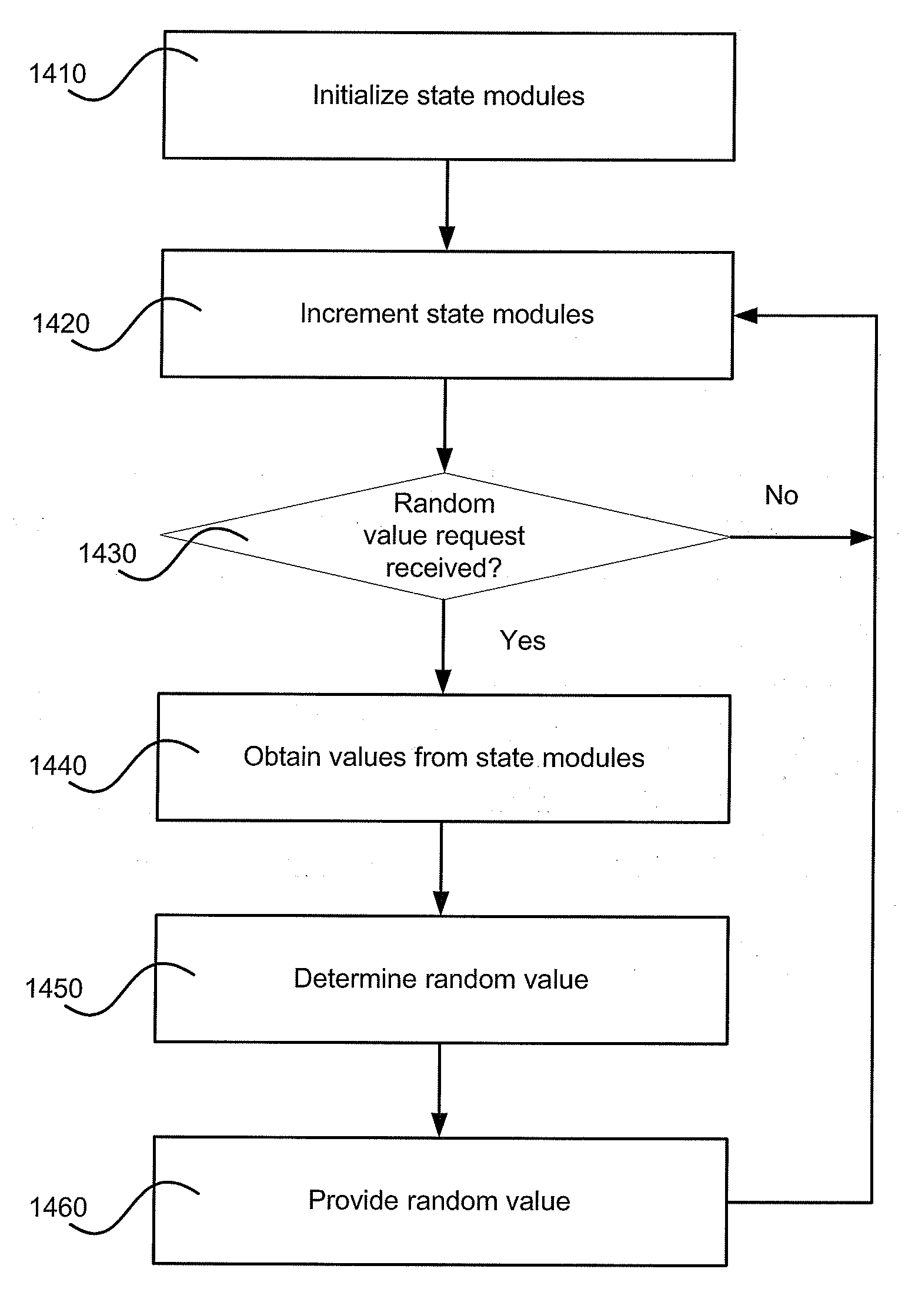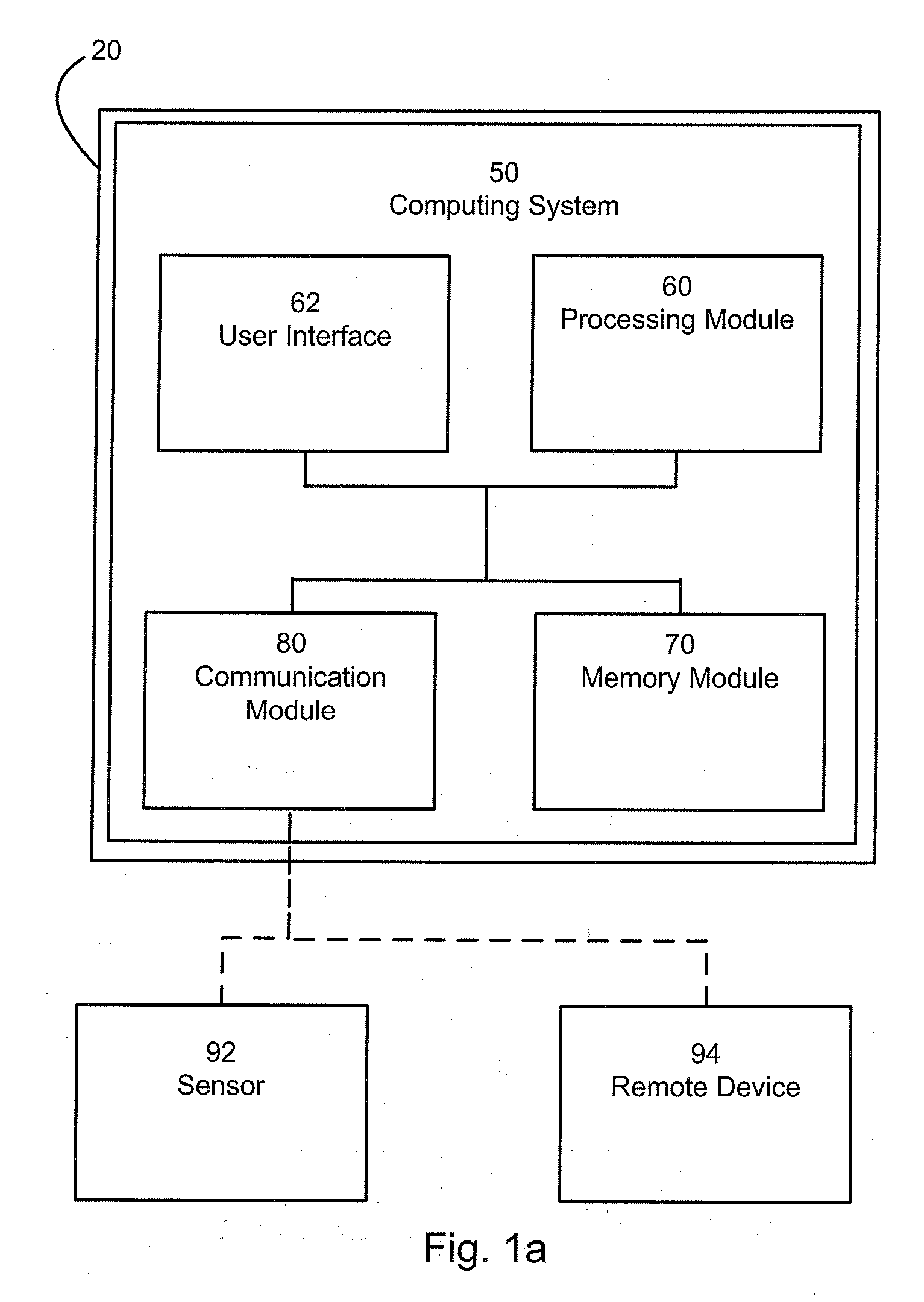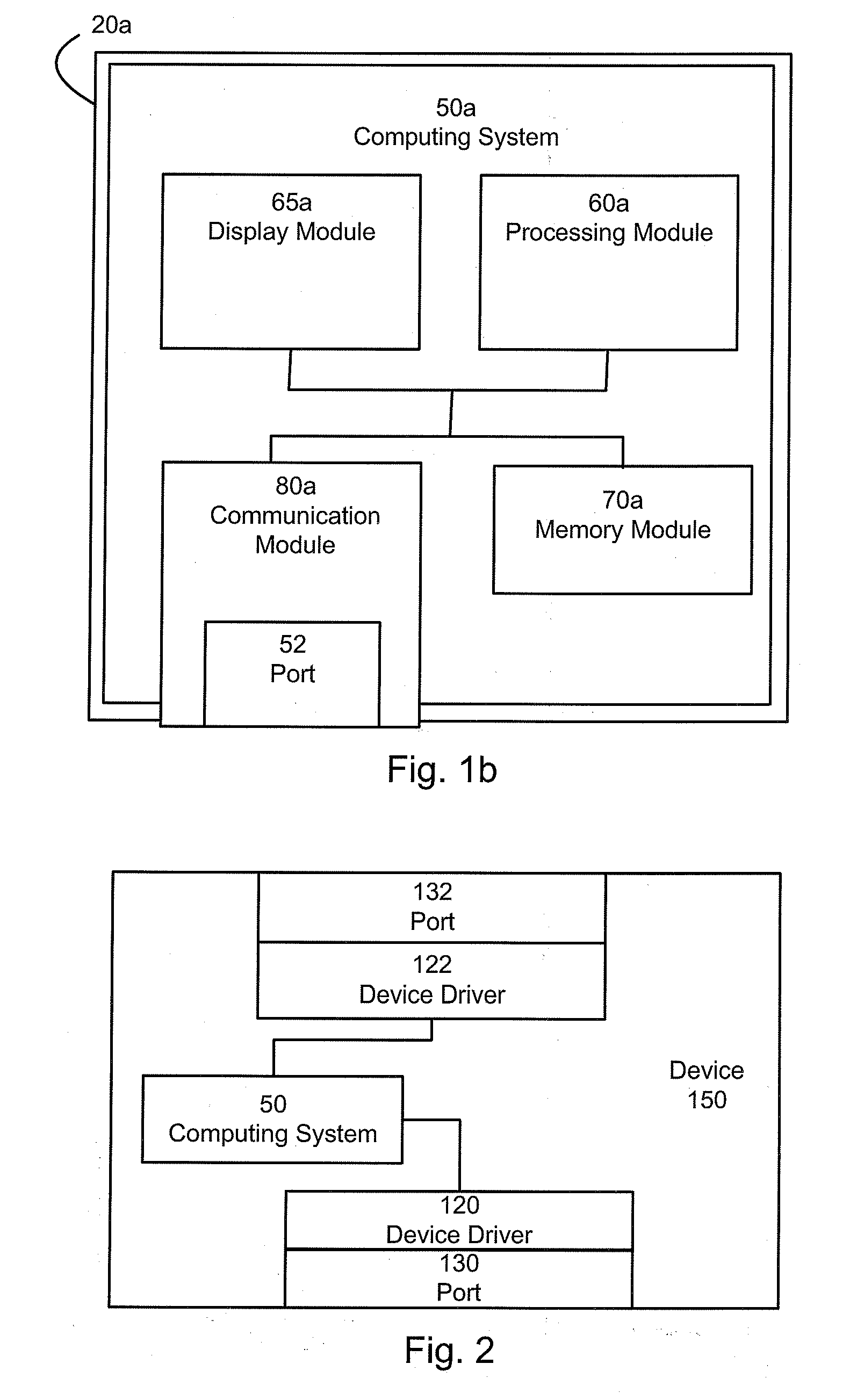Pseudorandom Number Generation
a random number and number technology, applied in the field of random number generation, can solve the problems of generating random numbers, being less suitable for many systems, and being somewhat complex
- Summary
- Abstract
- Description
- Claims
- Application Information
AI Technical Summary
Benefits of technology
Problems solved by technology
Method used
Image
Examples
an example
[0069]FIG. 14 illustrates a representative set of steps that may be used to generate a random number. First, in step 1410 the set of state modules are initiated. This may include selecting the limits for each state module if the limits are adjustable as well as selecting the incrementing values for each state module. Furthermore, this may include determining which, if any, of the state machines incrementing values depend on another state machine (e.g., there is a cascaded arrangement). In an embodiment the state machines may be combined mod 2w where w=8, thus the upper limit is 255 and the length L of each of the states of the state modules can be up to 256. The total number of state modules k is set equal to four and the knapsack of state module lengths {L} is {256, 127, 179, 101}.
[0070]In an embodiment, the INIT value for each state module Xi is i−1. Also, the 256 state module is as shown in FIG. 6 without the limit check and C1=85. This means, for the first state variable X1, the...
PUM
 Login to View More
Login to View More Abstract
Description
Claims
Application Information
 Login to View More
Login to View More - R&D
- Intellectual Property
- Life Sciences
- Materials
- Tech Scout
- Unparalleled Data Quality
- Higher Quality Content
- 60% Fewer Hallucinations
Browse by: Latest US Patents, China's latest patents, Technical Efficacy Thesaurus, Application Domain, Technology Topic, Popular Technical Reports.
© 2025 PatSnap. All rights reserved.Legal|Privacy policy|Modern Slavery Act Transparency Statement|Sitemap|About US| Contact US: help@patsnap.com



